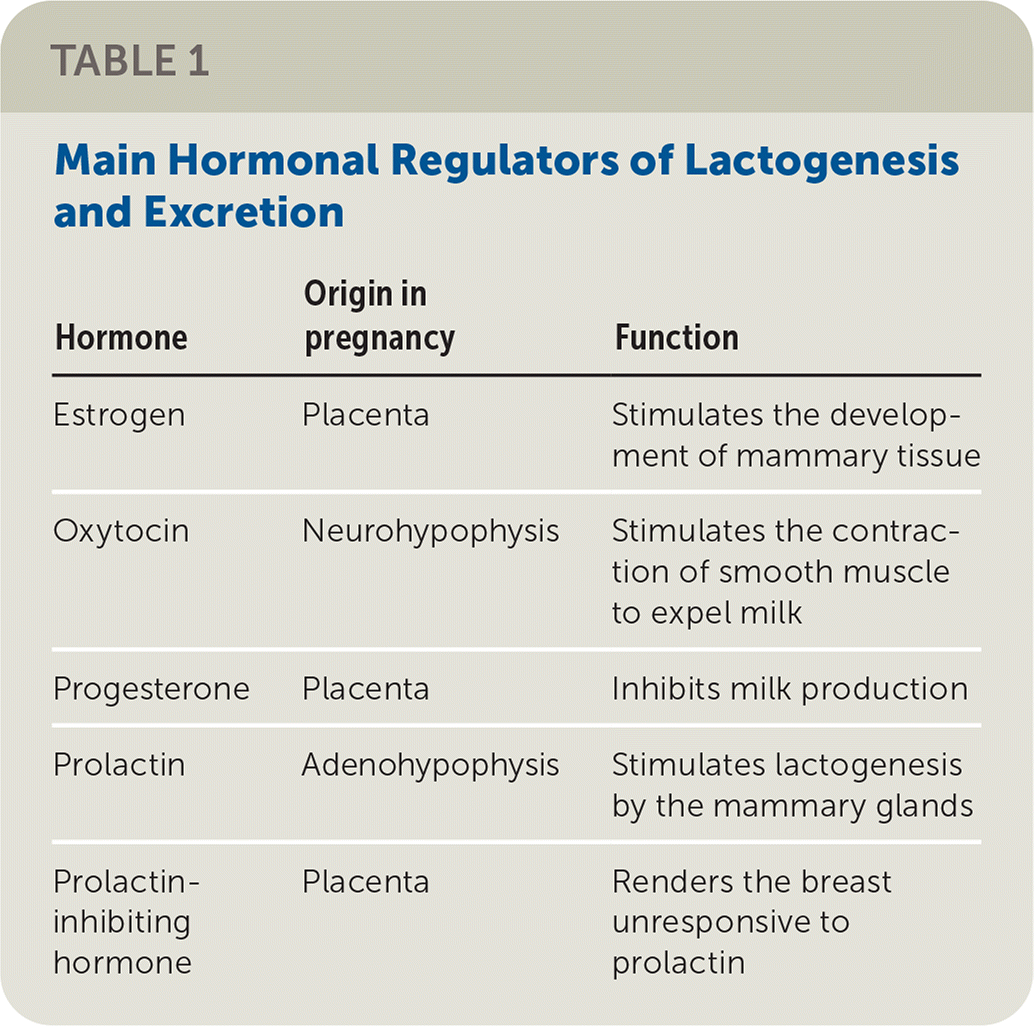
Am Fam Physician. 2023;107(2):119-120
Author disclosure: No relevant financial relationships.
To the Editor: Breastfeeding has many nutritional and psychological benefits, including the passage of SARS-CoV-2 antibodies in milk.1,2 Induced lactation is the initiation of lactation in a person who has not given birth and may interest some families, including couples who are adopting or same-sex couples (e.g., when both want to breastfeed after one carried the pregnancy).
Physicians can induce lactation by simulating the two stages of a biological pregnancy. In stage I, estrogen stimulates the development of mammary tissue, and progesterone inhibits milk production. By withdrawing these agents, physicians can simulate the hormonal changes of parturition, which causes estrogen levels to drop and the breast to lose progesterone receptors, rendering the tissue responsive to prolactin.3
In stage II, prolactin and oxytocin, which establish and maintain the milk supply,4,5 are secreted when mechanoreceptors in the nipple and areola are stretched. Oxytocin is secreted when the patient sees or hears a baby. Prolactin stimulates lactogenesis by the mammary glands. Oxytocin stimulates the contraction of smooth muscle to expel milk, and mechanical nipple stimulation promotes the maternal secretion of these hormones.3,5 Table 1 summarizes the main hormonal regulators of lactogenesis and excretion.

| Hormone | Origin in pregnancy | Function |
|---|---|---|
| Estrogen | Placenta | Stimulates the development of mammary tissue |
| Oxytocin | Neurohypophysis | Stimulates the contraction of smooth muscle to expel milk |
| Progesterone | Placenta | Inhibits milk production |
| Prolactin | Adenohypophysis | Stimulates lactogenesis by the mammary glands |
| Prolactin-inhibiting hormone | Placenta | Renders the breast unresponsive to prolactin |
A healthy 27-year-old nulliparous woman asked their family physician for help inducing lactation before adopting an infant. In consultation with pharmacy services, a regimen was constructed with a low-androgenicity progestin and estrogen to imitate pregnancy.6 The patient was prescribed ethinyl estradiol/ethynodiol diacetate, 35 mcg/1 mg daily, to be discontinued 48 hours before initiating lactation.
After 23 weeks, the patient was matched with an infant. They discontinued ethinyl estradiol/ethynodiol diacetate and started taking 20 mg of domperidone (available in the United States only by physician request) four times daily, pumping every two to three hours. Domperidone is a dopamine antagonist that promotes the secretion of prolactin. Domperidone is preferred over metoclopramide because it does not cross the blood-brain barrier.1,6 The patient initially produced 17 oz of milk per day. After consulting with a lactation specialist, they produced 30 oz of milk per day.
This patient demonstrates how family physicians can support parents who have not given birth and want to breastfeed. Careful counsel and clinical judgment are necessary due to the lack of literature on this topic, but the benefits may justify the effort for some families. Blinded, placebo-controlled studies are needed to evaluate the safety and effectiveness of induced lactation.
